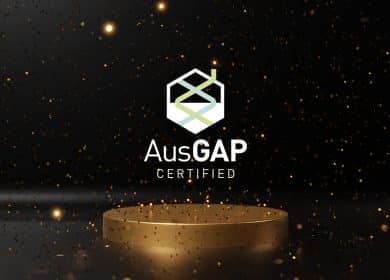
Women in the turfgrass industry are an underrepresented demographic. Proving problematic to the future of the industry, measures need to be taken to change this issue. Increased recruitment and retention of women to the turfgrass industry could ease labour concerns. However, change in the industry is needed to improve the culture for current women and to create a more welcoming atmosphere for women considering careers in turf. Read on to find out more about women in the turfgrass industry, the issues they face, and the impact they have on the industry.
In a survey conducted in 2018 by the Golf Course Superintendents Association of America (GCSAA), almost 60% of golf course superintendents reported they has unfilled or open positions (GCSAA, 2018). Accordingly, in Australia females make up only 1.4% of qualified trade workers. Comparatively to Canada, Europe, and New Zealand where women represent between 4% to 7% of the industry’s workforce (ASTMA 2022).
What are the issues facing women in the turfgrass industry?
There are many contributing factors to issues women face in the industry. However, a major factor is the limited awareness of the trade being a viable career option for women. Therefore, resulting in a disproportionally low number of females undertaking an apprenticeship in sports turf management. This may be due to the cultural attitudes and perceptions about what roles are ‘suitable’ for women (Baxter et al., 2011).
There are not only issues for women looking to join the industry but also those that are actively participating in it. Retention of women may be the biggest issue facing the industry. As women have expressed experiencing peer misconduct, stereotypes, and a struggle between work-life balance (Carol et al., 2021).
What is being done to reduce the issues being faced?
In recent times the topic of women in the turfgrass industry has come into focus. For example, media such as journals, magazines and social media are creating spaces for women in the industry. Furthermore, there is an increasing rate of female leaders being featured for their accomplishments and for paving the way. Through the development and exposure of industry programs for women in turf, the turfgrass industry is working to create a more inclusive space for women.
These programs and media exposure highlight the acceptance of women in the industry. By addressing barriers and challenges women face and opening the discussion for these issues, real change can be made. However, Carol et al 2021 discusses that ‘some males in the industry perceive change in the name of diversity as unwarranted given that few women have openly expressed their challenges, and those who have are often considered outliers’. This suggests that while change is being made, a deeper understanding of barriers women face in the industry is needed in order to increase recruitment and retention.
What are studies saying?
In a recent study, 64% of participants identified self-efficacy as a required trait to aid overcoming barriers related to gender discrimination (Kelsey et al., 2007). To supplement this, another study pertaining to female leaders in the turf industry also observed traits self-efficacy. This was observed through their ability to build relationships with co-workers, connecting with mentors, seek additional leadership and educational opportunities, while maintaining a positive mentality (Carol et al., 2021). Studies have often identified these traits as success factors for women in male-dominated industries.
The more opportunities women have to successfully engage in the turfgrass industry through positive experiences, the more likely they are to remain in the field and grow as leaders. Through inclusive programs and pursuing personal growth we can expect to see more women participating in the turfgrass industry.
References:
Australian Sports Turf Managers Association. (2022). Women in Turf Strategy. Women in turf strategy. Retrieved from https://www.agcsa.com.au/education/women-in-turf-strategy/
Kelsey, K. D. (2007). Overcoming gender bias with self-efficacy: A case study of women agricultural education teachers and preservice teachers. Journal of Agricultural Education, 48(1), 52-63. https://doi.org/10.5032/jae.2007.01052
Carroll, D. E. (2021). Women in Turf: A Qualitative Study Examining How Women Have Sustained Their Leadership Role in the Turfgrass Industry. Journal of Agricultural Education, 62(4). Retrieved from https://www.jae-online.org/attachments/article/2437/62.4.14%20139-157.pdf
Baxter, L., Stephens, C. A., & Thayer-Bacon B.J. (2011). Perceptions and barriers of four female agricultural educators across generations: A qualitative study. Journal of Agricultural Education, 52(4), 13-23. https://doi.org/10.5032/jae.2011.04013
Golf Course Superintendents Association of America. (2018). Labor Survey Report 1-24. Hartsock, A. (2019). Labor pains in golf course management. https://www.gcmonline.com/course/environment/news/golf-course-labor


